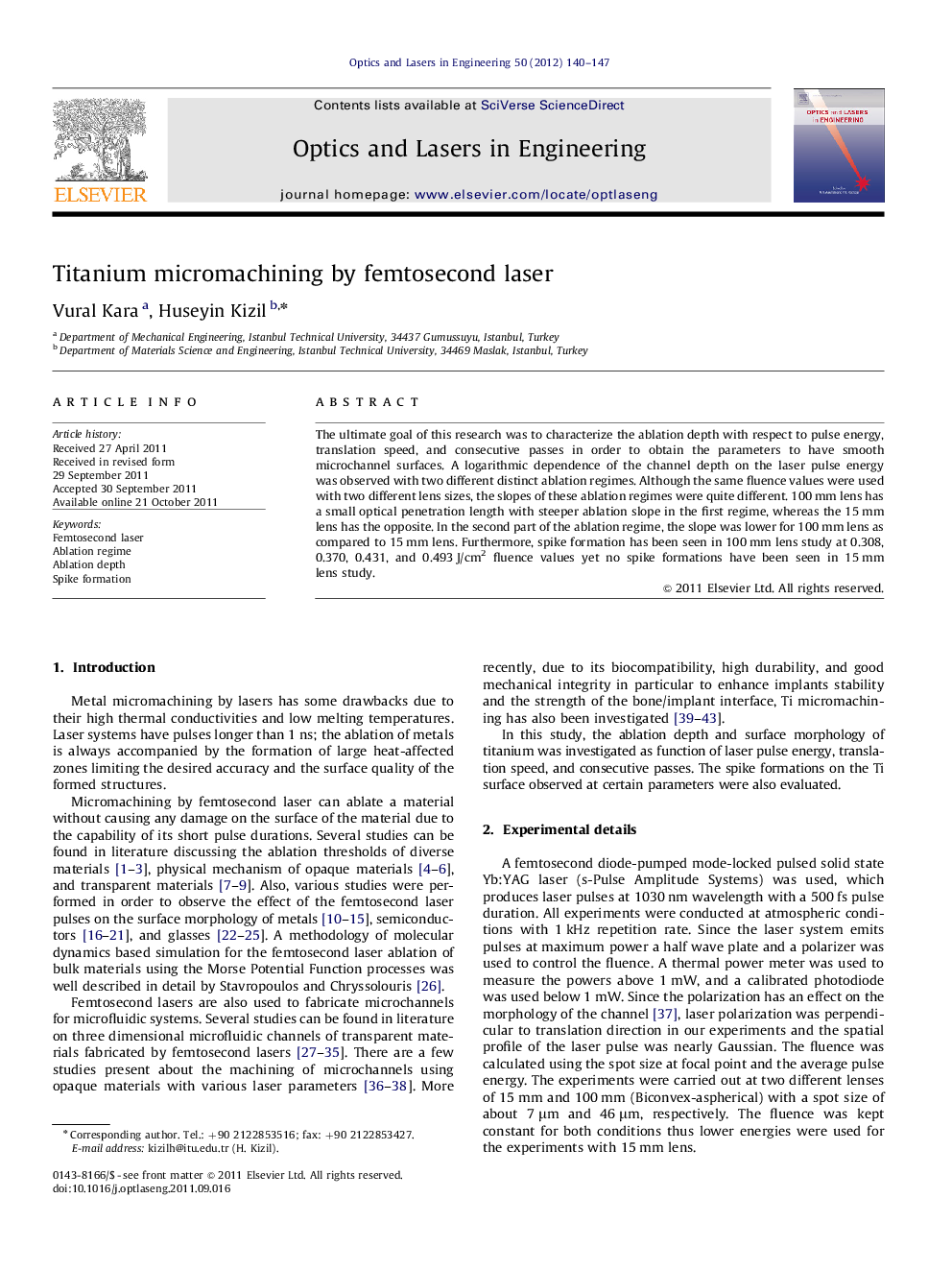| Article ID | Journal | Published Year | Pages | File Type |
|---|---|---|---|---|
| 736075 | Optics and Lasers in Engineering | 2012 | 8 Pages |
The ultimate goal of this research was to characterize the ablation depth with respect to pulse energy, translation speed, and consecutive passes in order to obtain the parameters to have smooth microchannel surfaces. A logarithmic dependence of the channel depth on the laser pulse energy was observed with two different distinct ablation regimes. Although the same fluence values were used with two different lens sizes, the slopes of these ablation regimes were quite different. 100 mm lens has a small optical penetration length with steeper ablation slope in the first regime, whereas the 15 mm lens has the opposite. In the second part of the ablation regime, the slope was lower for 100 mm lens as compared to 15 mm lens. Furthermore, spike formation has been seen in 100 mm lens study at 0.308, 0.370, 0.431, and 0.493 J/cm2 fluence values yet no spike formations have been seen in 15 mm lens study.
► A logarithmic dependence of the channel depth on the laser pulse energy was observed with two distinct ablation regimes. ► Although the same fluence values were used with two different lenses, the slopes of ablation regimes were different. ► 100 mm lens has a smaller optical penetration depth with higher slope, whereas the 15 mm lens has the opposite. ► At high fluence values debris accumulation was observed. ► The consecutive number of passes had a significant effect on the channel surface smoothness.
